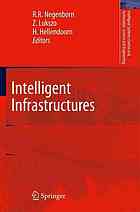

Most ebook files are in PDF format, so you can easily read them using various software such as Foxit Reader or directly on the Google Chrome browser.
Some ebook files are released by publishers in other formats such as .awz, .mobi, .epub, .fb2, etc. You may need to install specific software to read these formats on mobile/PC, such as Calibre.
Please read the tutorial at this link: https://ebookbell.com/faq
We offer FREE conversion to the popular formats you request; however, this may take some time. Therefore, right after payment, please email us, and we will try to provide the service as quickly as possible.
For some exceptional file formats or broken links (if any), please refrain from opening any disputes. Instead, email us first, and we will try to assist within a maximum of 6 hours.
EbookBell Team

4.0
56 reviewsModern societies heavily depend on infrastructure systems such as road-traffic networks, water networks, and electricity networks. Nowadays infrastructure systems are large-scale, complex networked, socio-technical systems, that almost everybody uses on a daily basis, and that have enabled us to live closely together in large cities. Infrastructure systems are so vital that their incapacity or destruction would have a fatal effect on the functioning of our society. The complexity of these systems is defined by their multi-agent and multi-actor character, their multi-level structure, their multi-objective optimization challenges, and by the adaptivity of their agents and actors to changes in their environment. The operation and control of existing infrastructures is fallible: too often people are confronted with capacity problems, dangerous situations, unreliability, and inefficiency.
More intelligent infrastructures gain an advantage in terms of more efficient capacity management, improved reliability of service, increased sustainability, and enhanced infrastructure security. Infrastructure operation should be able to more autonomously determine how to operate the infrastructure, taking into account the most up-to-date state of the infrastructure, and taking into account the existence of several decision makers, such that ultimately the infrastructure is operated in a pro-active way and issues are resolved quickly.
This book concentrates on a wide range of problems in the way infrastructures are functioning today and discusses novel advanced, and intelligent methods and tools for the operation and control of existing and future infrastructures.